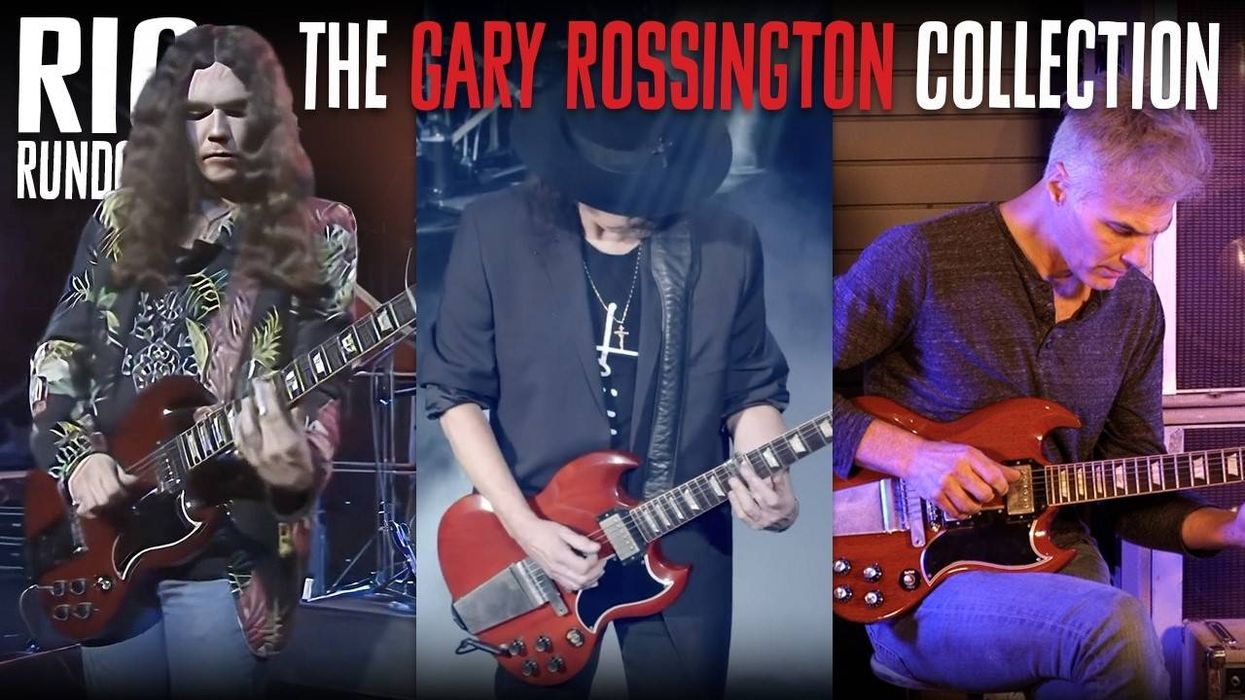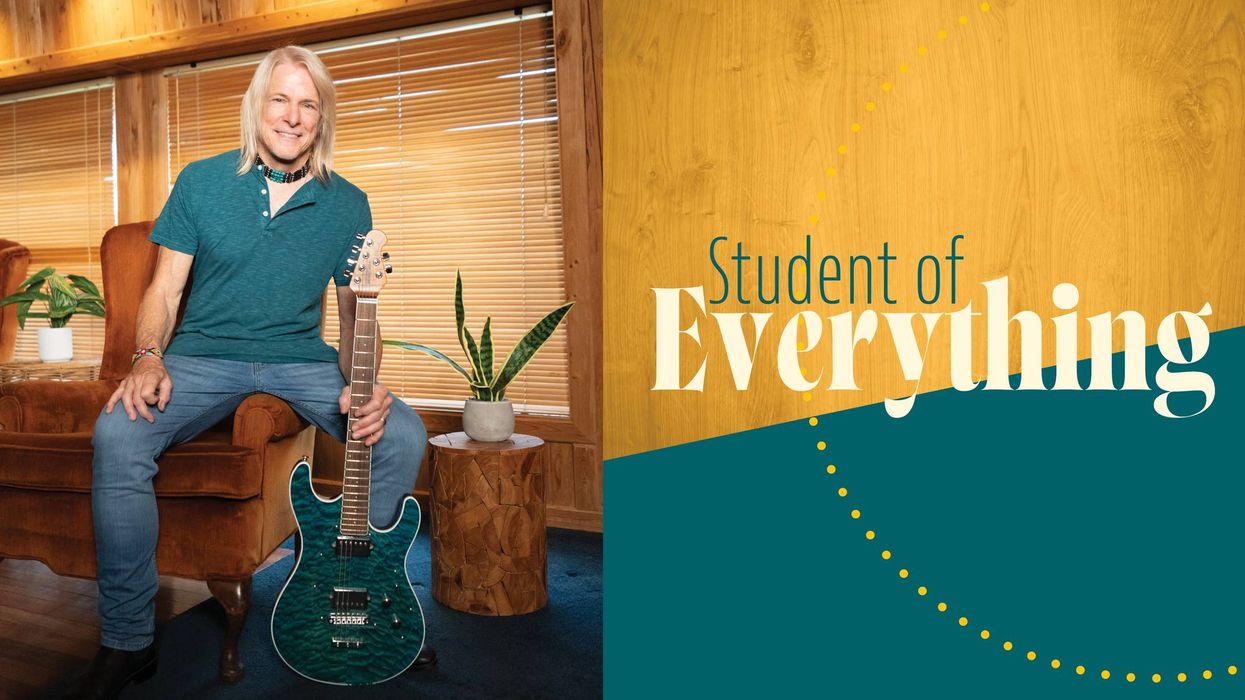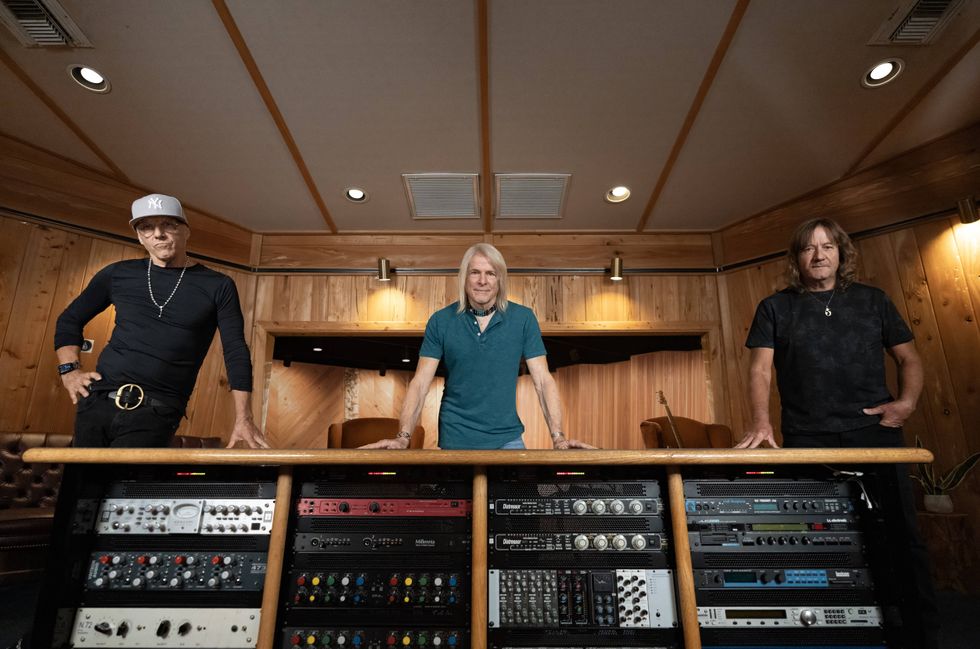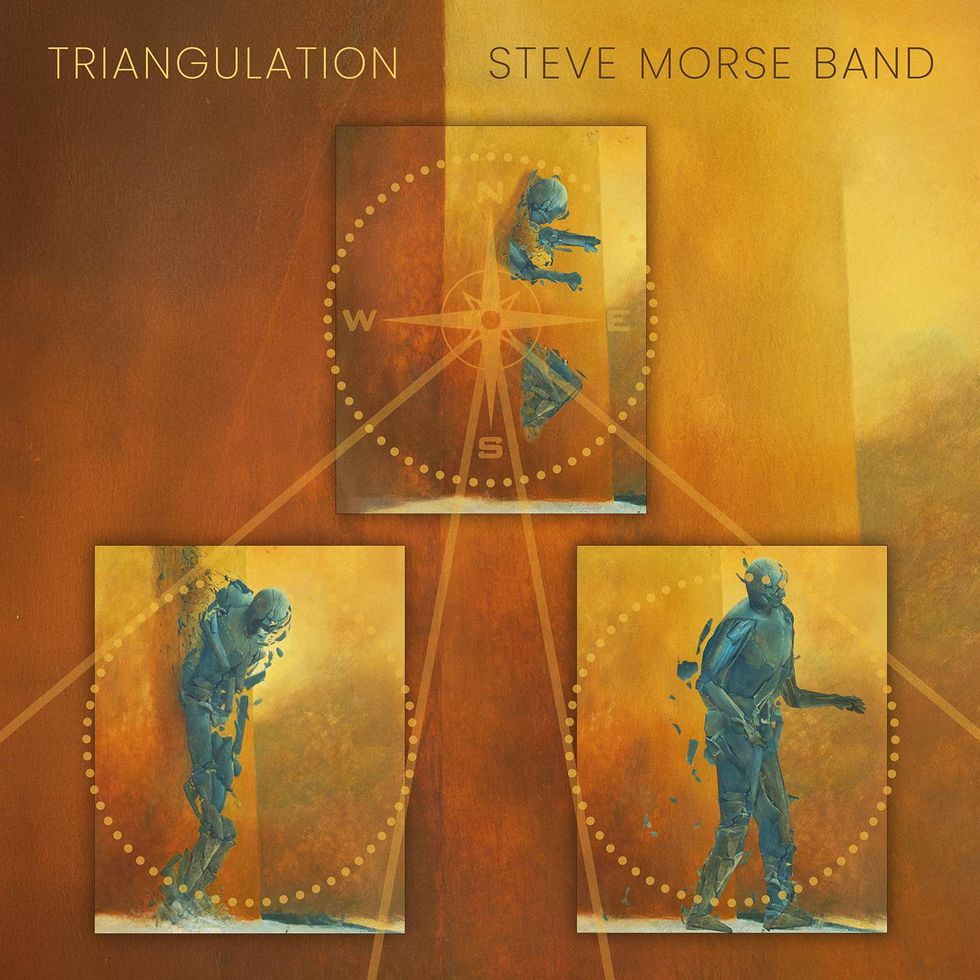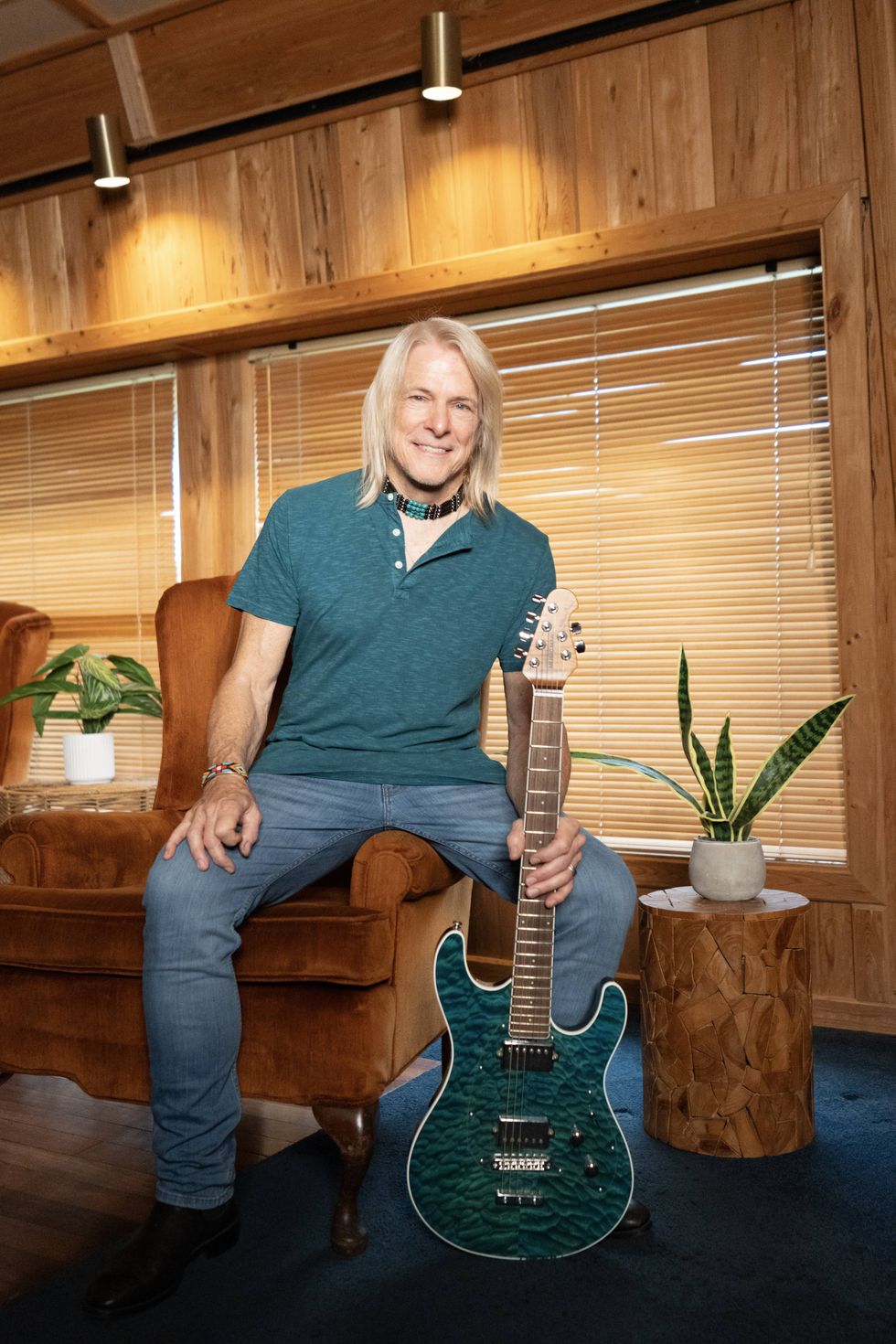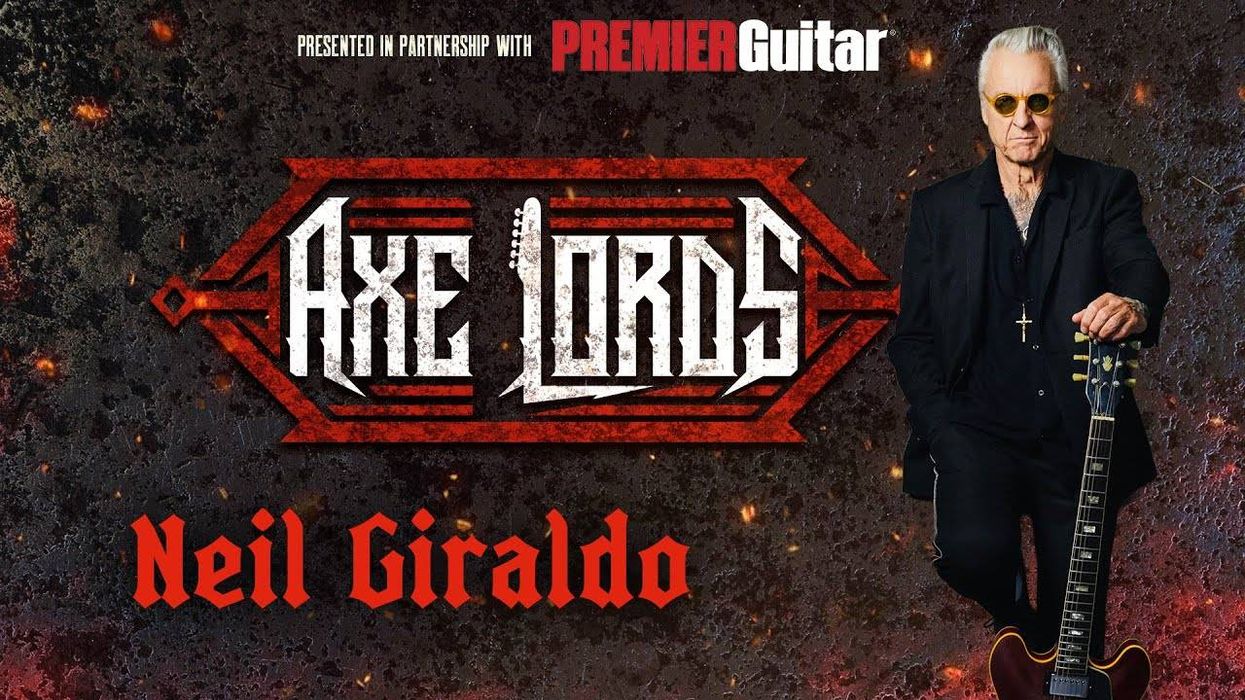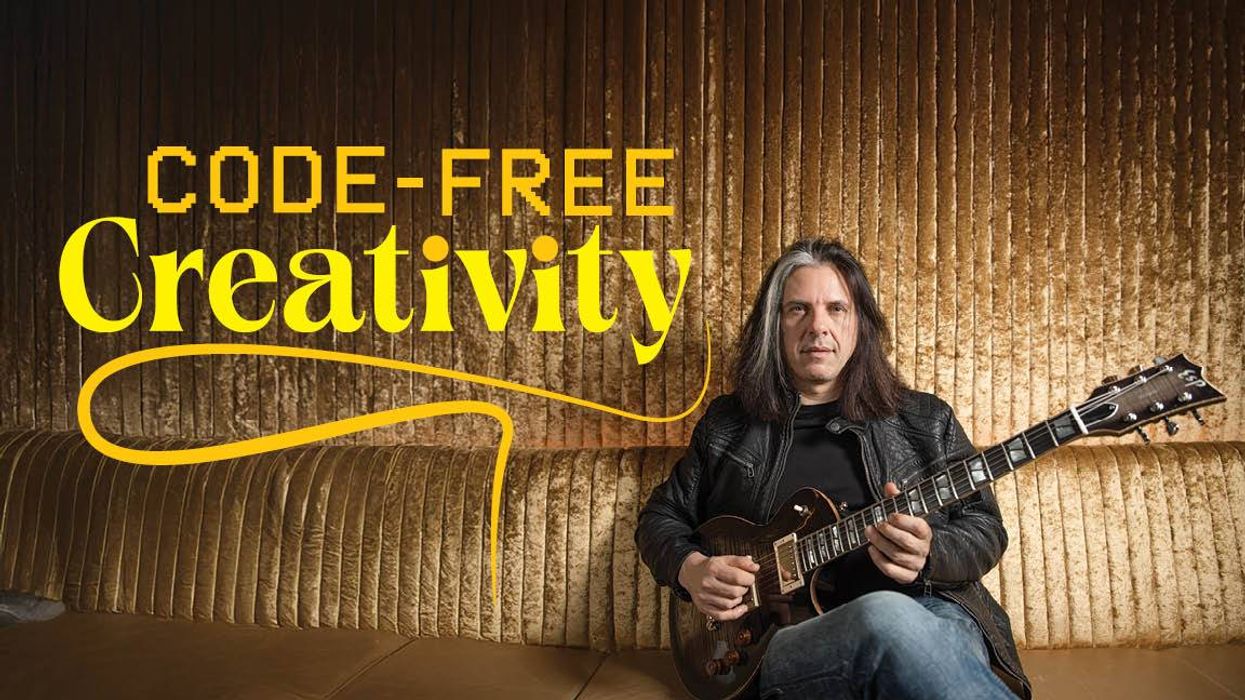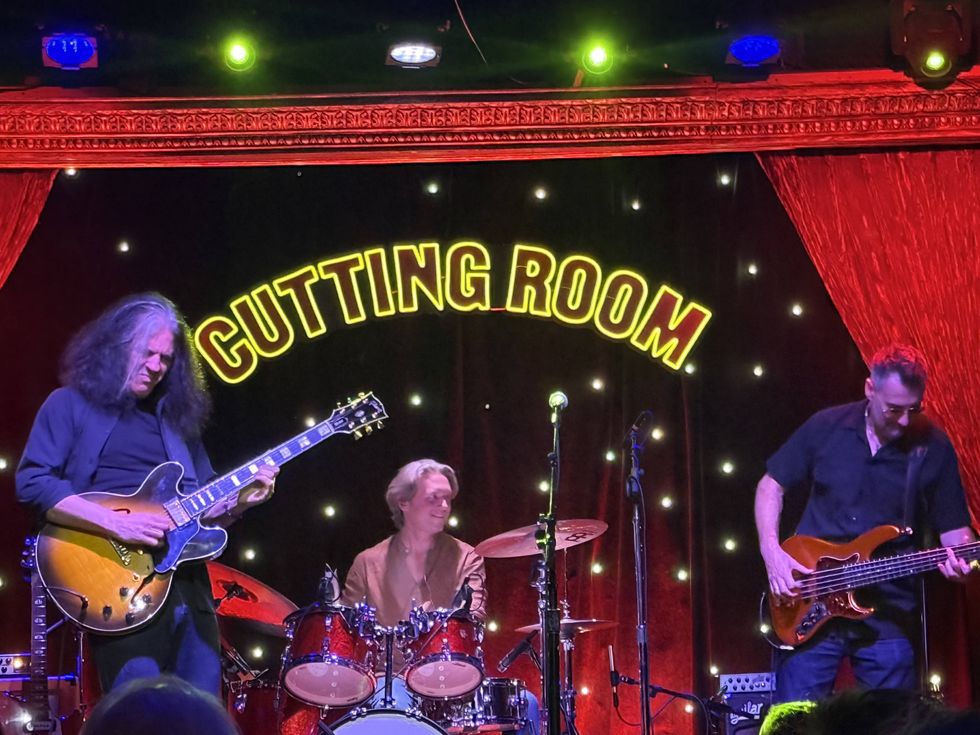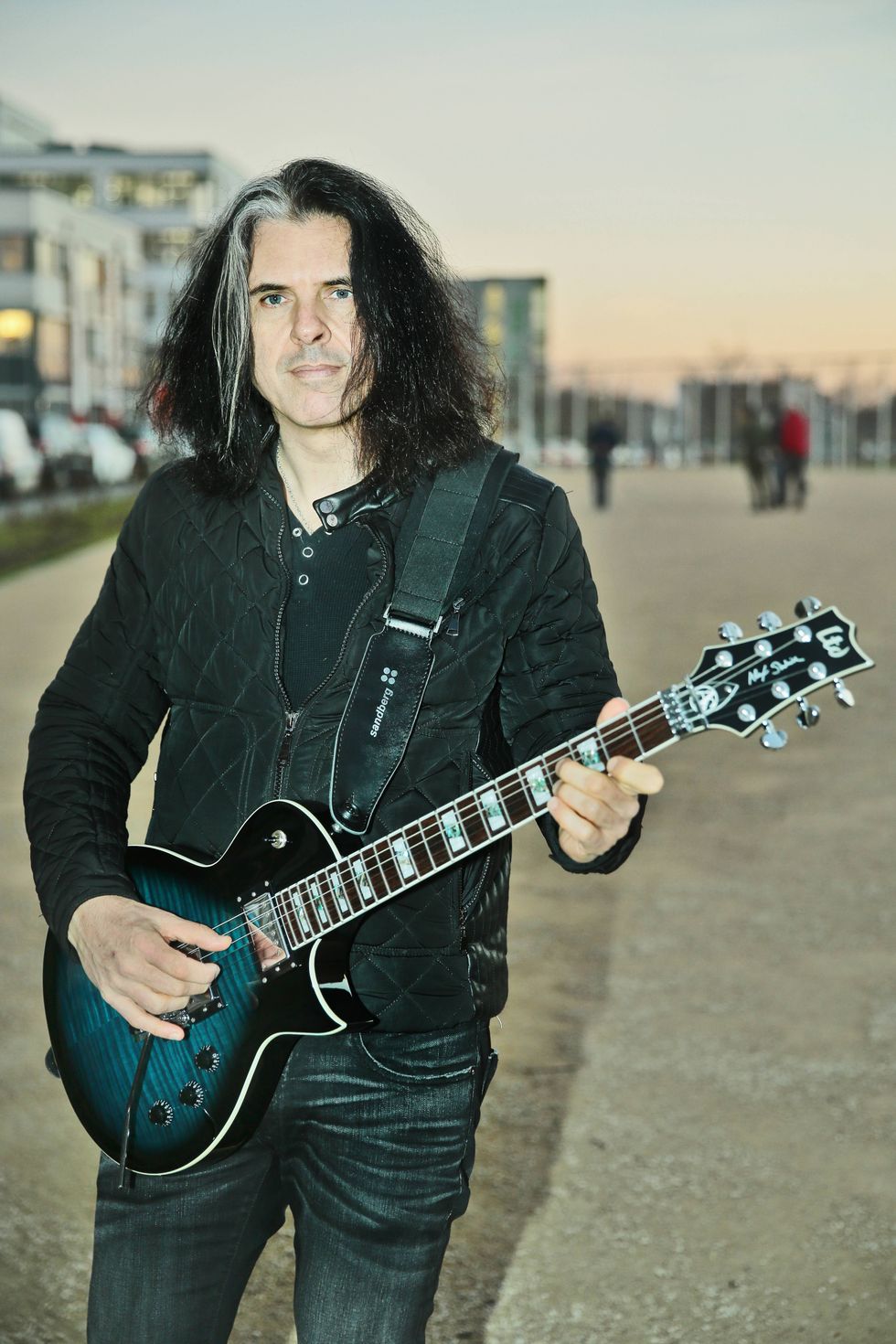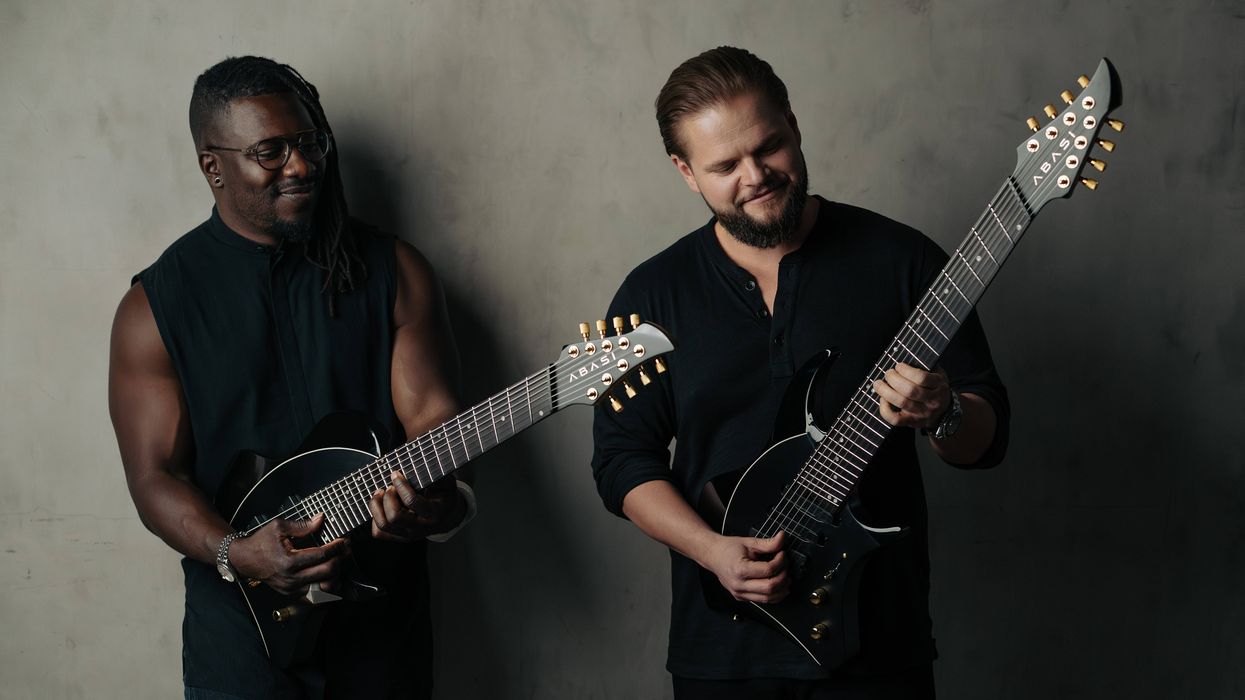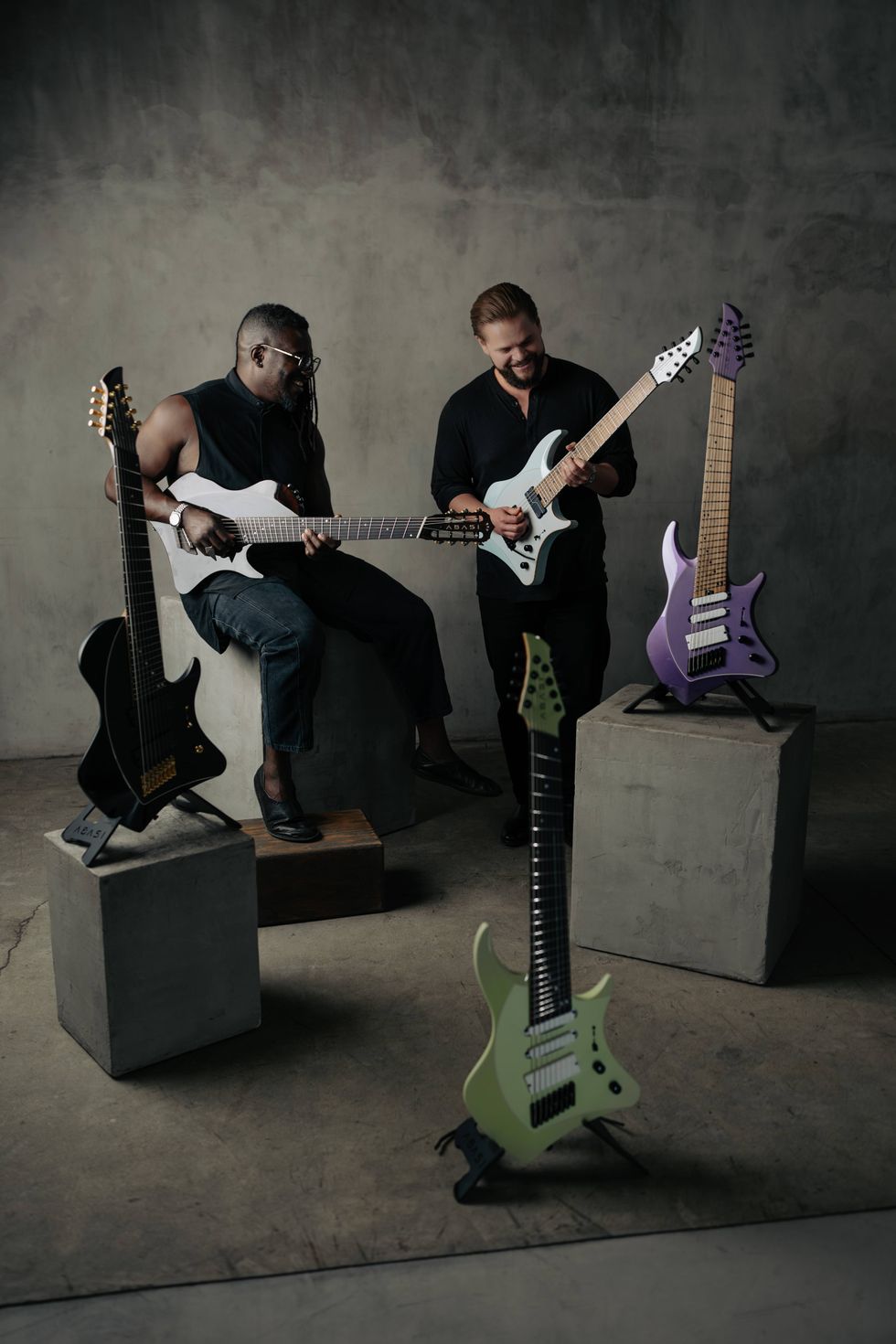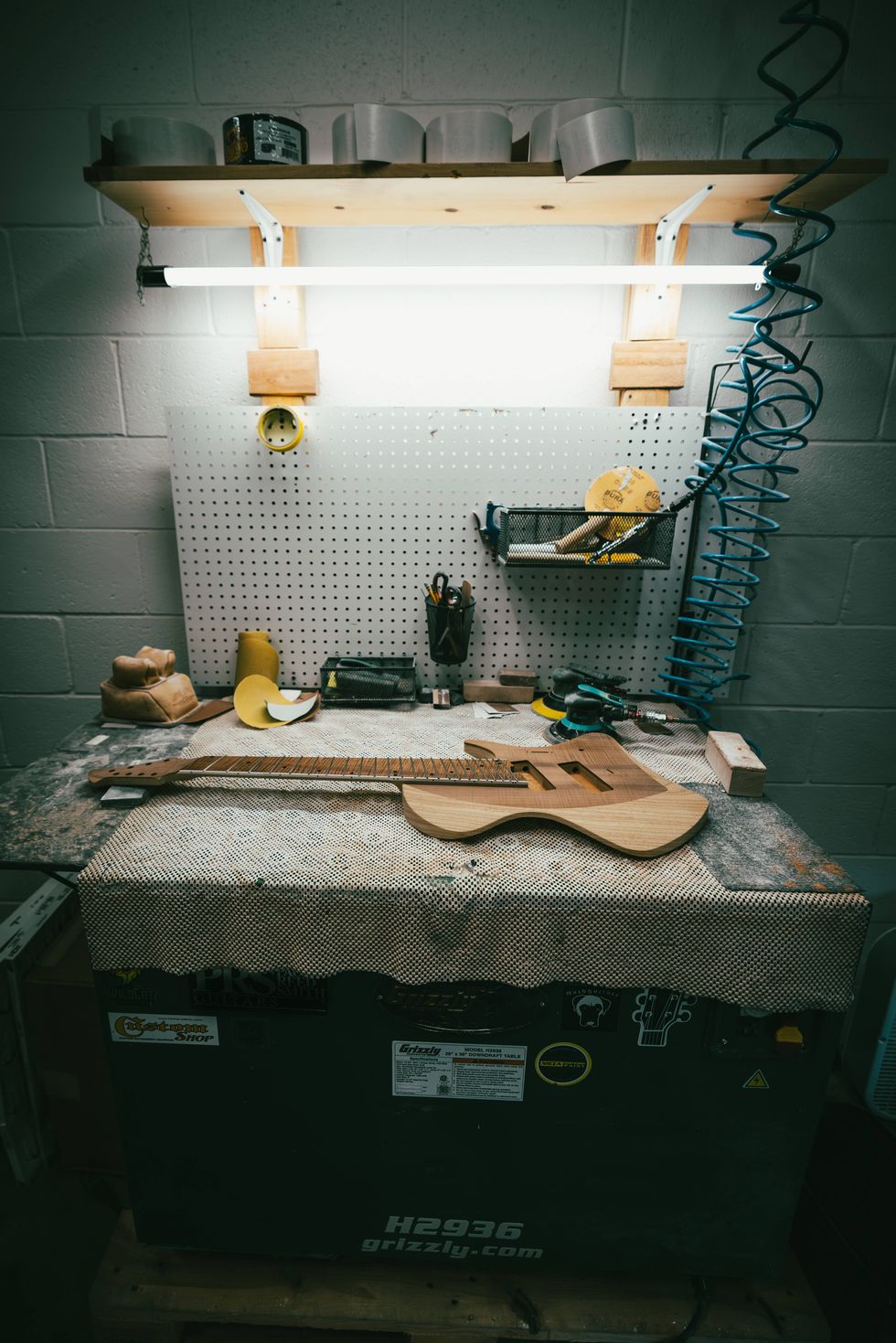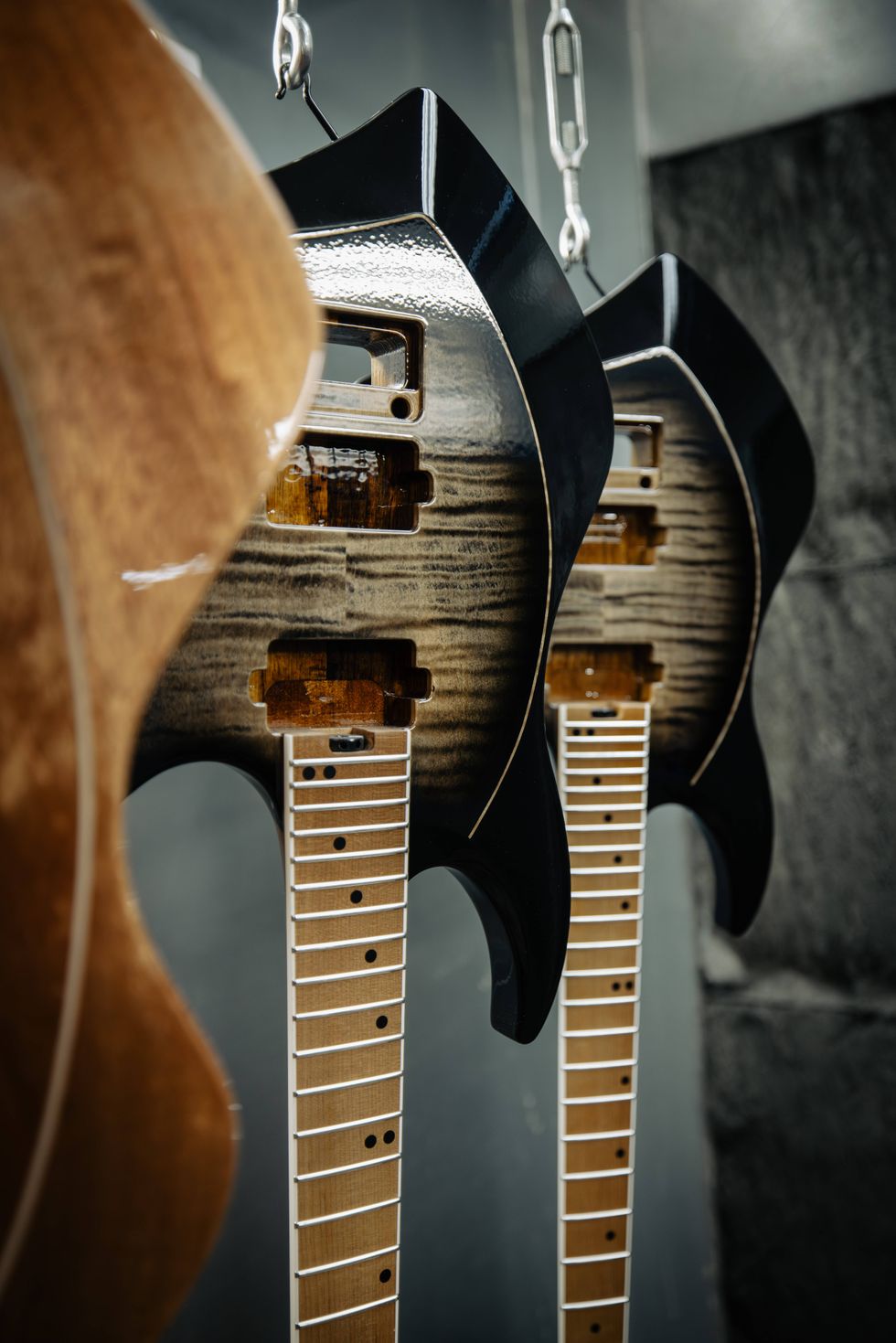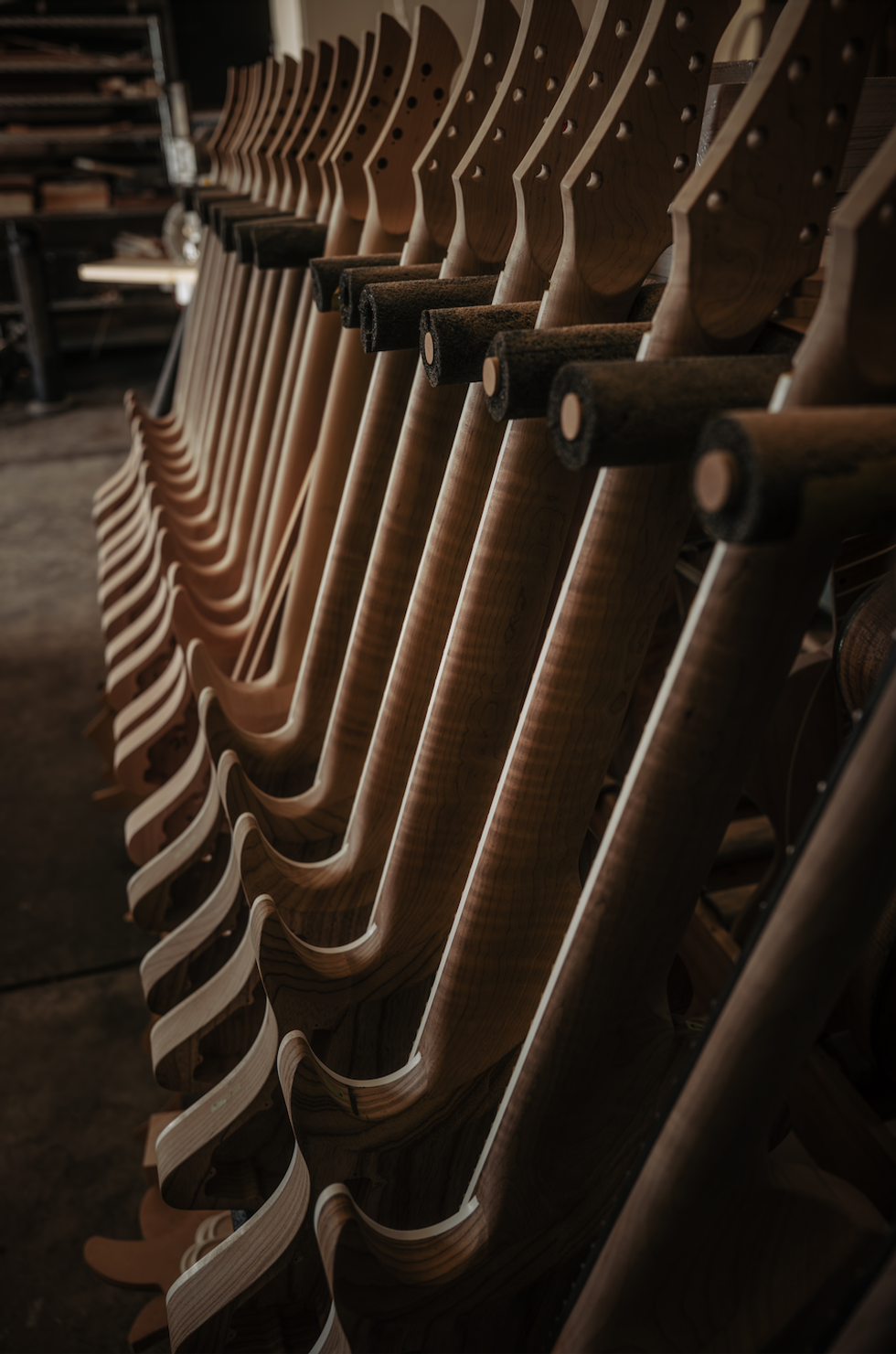Listening to Oklahoma City band Chat Pile is thrilling in the same way watching a particularly transgressive or unflinching horror movie is. Their music has a lot in common with the unsettling, avant-garde throat-singing of Inuit artist Tanya Tagaq: In the absence of an immediate narrative and overt lyrics in favor of fragmented, thematic collages of phrases and energies, we’re confronted with a subconscious, cellular sense of discomfort, one that compels our imagination to fill in some of the blanks. That can get scary.
This isn’t terribly marketable music, and yet Chat Pile are one of the hottest heavy American bands of this moment—and one of the more successful horror-movie-inspired noise-rock bands ever to emerge from the American plains. There are a few ways to understand Chat Pile’s success. It takes a lucky convergence of tastes and aesthetics to turn those influences into a project that can reach beyond a local scene. And in the years since forming in 2019, it’s become clear that the sludgy OKC band have formulated a winning combination of sledge-hammering riffs, hypnotic grooves, unnerving vocals, and even more unnerving lyrics.
After a couple chilling EPs, Chat Pile’s 2022 debut LP, God’s Country, broke the band around the world. Songs from that record have nearly 2 million streams on Spotify, and the headlining tour behind it featured sold-out shows in places they had never played before. “When we first started, people wouldn’t book us here in Oklahoma City,” says bassist Stin. “As soon as things started taking off more nationally, that’s when people started coming around locally.”
“It’s subtle, but these things that are around you all the time…. When you open up your eyes to them, it’s kind of horrifying.”—Stin
The band’s new full-length, Cool World, is a potent expansion of their realist sound. It’s also a demonstration that each member of Chat Pile, all of whom use pseudonyms in the project, is as important as the other. They are vocalist Raygun Busch, guitarist Luther Manhole, drummer Cap’n Ron, and Stin. (The latter two are brothers.) Lead single and opener “I Am Dog Now” starts with a cursed 6/8 riff before dipping to 5/4 as Busch’s bleeding-out-in-a-bear-trap wails enter. On “Funny Man,” another single, Manhole’s spidery, plinking verse riff (a clean-tone trick he plays across the record) is just one set piece in a twisted tableau of doom, metal, and grunge. Lead single “Masc” might be the record’s most compelling four minutes. Cap’n Ron’s delicious beat sets the scene, and Stin’s gristly, percussive bass locks in with it to sway into a pulsing nu-metal groove.
Stin thinks part of the band’s popularity is related to their ability to articulate, in both word and sound, this sociopolitical moment. “A lot of that is anxiety and dread and fear, and I think we’re quite literally speaking on those feelings that people have been feeling for quite a while now,” says Stin. “A lot of whatever popularity we’re experiencing is luck and being in the right place at the right time, but I think a part of that luck is moved along by our band being able to express the feelings a lot of people are having.”
“It’s not just us,” notes Manhole. “I feel like angry music is coming back.”
Initially, Stin and Manhole had the idea to start a “heavier” music project, something along the lines of Godflesh or the Jesus Lizard, with bits of hardcore and slam metal, too. (“Honestly, we’re trying to make sort of the most ignorant type of music that you could think of,” Stin jokes.) Raygun and Stin had talked for years about forming a band in the vein of Steve Albini’s Big Black, which meshed with the Albini-influenced noise rock that Stin and Manhole had been jamming. But they knew each other as friends for years before forming—a bond they say is more important than musical compatibility. “We trust each other’s taste and artistic vision,” says Stin. “It’s not like we all think identically. It helps when you are with people you’ve known forever and who share similar values, you understand their worldview. That really helps foster a safe place, artistically.”
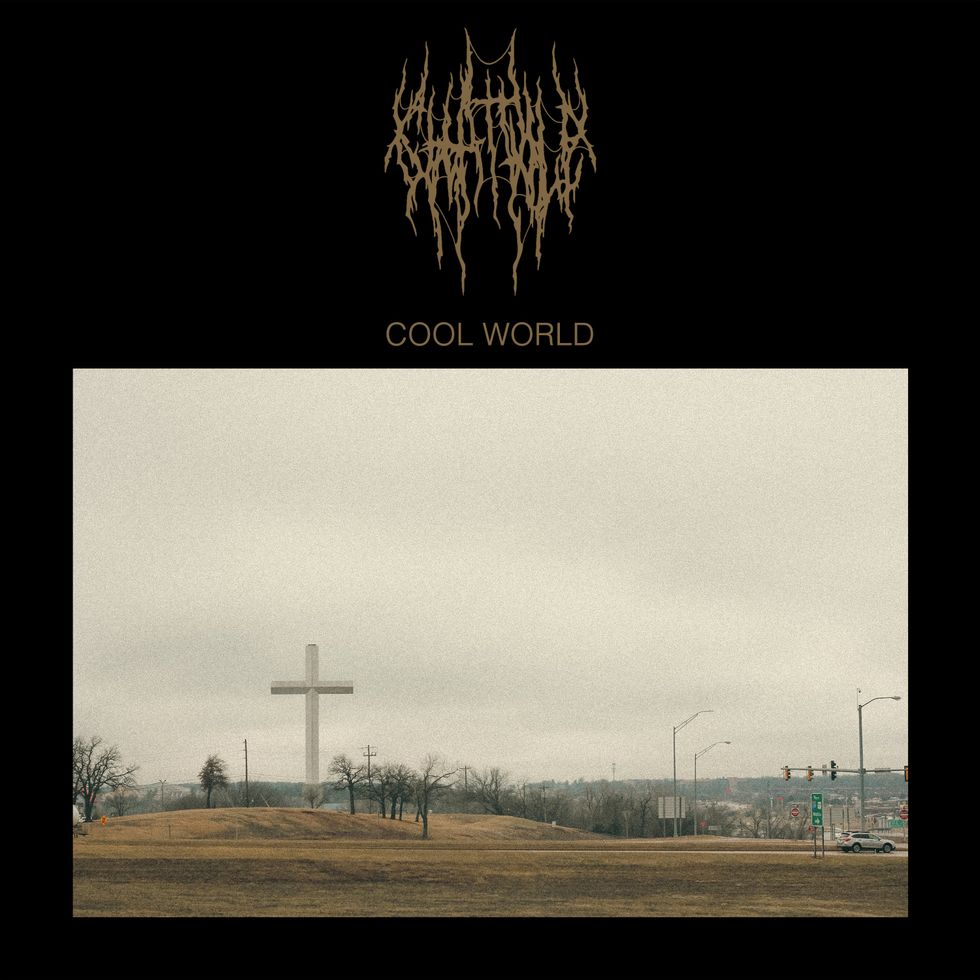
Like the band’s other releases, Cool World was recorded in the shed behind Stin’s Oklahoma City house. They don’t use metronomes or excessive plugins—just a simple combination of Shure mics and a basic interface.
The band records (live and without a metronome, Manhole says) in a shed behind Stin’s house, which has been converted into their studio and jam space. That means they have all the latitude and time they need to make the art they want. “It’s cheaper for us to do it this way,” says Stin, “but it’s also how we’ve learned to work as a band.” This time, they asked Ben Greenberg from industrial-metal band Uniform to mix the LP, but they still recorded it all on their own—using just some Shure mics through a four-channel Scarlett interface into a Mac.
“So much mainstream rock music that you hear is also recorded on a laptop, but it’s so doused through all these plugins and quantizing and stuff that it’s not even human music anymore,” says Stin. “With us, I use so little effects. Even if you have all this junky consumer gear that you’re using to record your music, the trick is just try to make it sound as natural as you can.”
Aside from three weeks of lessons in seventh grade, Manhole learned guitar by ear and tabs. Unwound’s Justin Trosper and Gorguts’ Luc Lemay were major influences, alongside XTC’s Andy Partridge and Dave Gregory. When Manhole writes, it’s almost always about feel. “We write through improv,” he says. “Usually, I have a 10-second riff that I came up with at home. Sometimes it’s more of a rhythm. Maybe Stin has a bassline that he thought of. We’ll just play it for 30 minutes straight and do variations. I play through the sour notes and see what sounds cool, try different shapes that I like to do over things. I don’t know a lot of the actual chords that I’m playing, but I know shapes I like.”
Stin's Gear
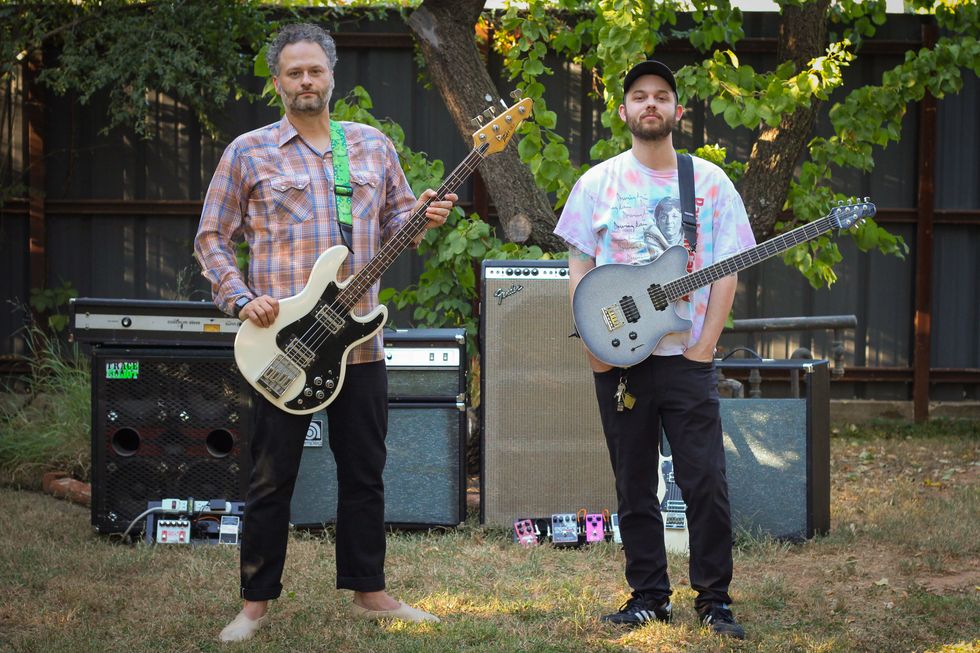
Stin (left) and Manhole (right) keep things simple with their gear collections: They like clean, natural tones that they can tweak and distort for just the right sounds.
Photo by Bayley Hanes
Bass
- Peavey T-40
Amps
- Sunn Coliseum Slave (studio)
- Quilter Bass Block 802 (live)
- Trace Elliot 4x10 redline cab with horns
Effects
- Boss Tuner
- Tronographic Rusty Box
Strings & Picks
- Ernie Ball Slinky Cobalt (.060–.125) (5-string set without the .040 string)
- Ernie Ball Everlast Picks (.73 mm orange)
Stin takes all the photos for Chat Pile’s albums—another key element of the total artistic product. While they feel inexplicably horror-indebted, they’re simply photos of everyday sights around Oklahoma City which “portray the kind of decay and doom and gloom of living in the southern plains. Within that is kind of this horror. It’s subtle, but these things that are around you all the time… When you open up your eyes to them, it’s kind of horrifying.” Stin spotted the enormous cross on the cover of Cool World in the parking lot of a megachurch north of Oklahoma City. “It’s just kind of this testament to this capitalistic approach to religion and how, especially here in the Bible Belt, it dictates your life and every level politically and socially,” he explains.
Listening to Chat Pile can feel like being trapped in the heat and grease and cogs and pistons of a hulking, relentless machine. Maybe the scariest bit is that that’s not too far off from the truth.
Luther Manhole's Gear
Guitars
Music Man BFR Axis Super Sport Baritone
Peavey T-60 with an Aluminati Guitars aluminum neck
Amps
Fender Super Six (studio)
Ampeg V4 (studio)
Quilter Tone Block 202 (live)
Ampeg VT-22 cab
Ampeg 4x10 cab made from a gutted Ampeg VT-40 combo amp
Effects
TC Electronic Hall of Fame
Suhr Riot
Electro-Harmonix Memory Boy
TC Electronic PolyTune
Strings & Picks
Ernie Ball Mammoth Slinky (.012–.062)
Ernie Ball Everlast Picks (.73 mm orange)
Take in the mesmerizing, unsettling energy of Chat Pile’s shows via this capture of their entire set at Outbreak Fest on June 29, 2024 in Manchester, U.K.




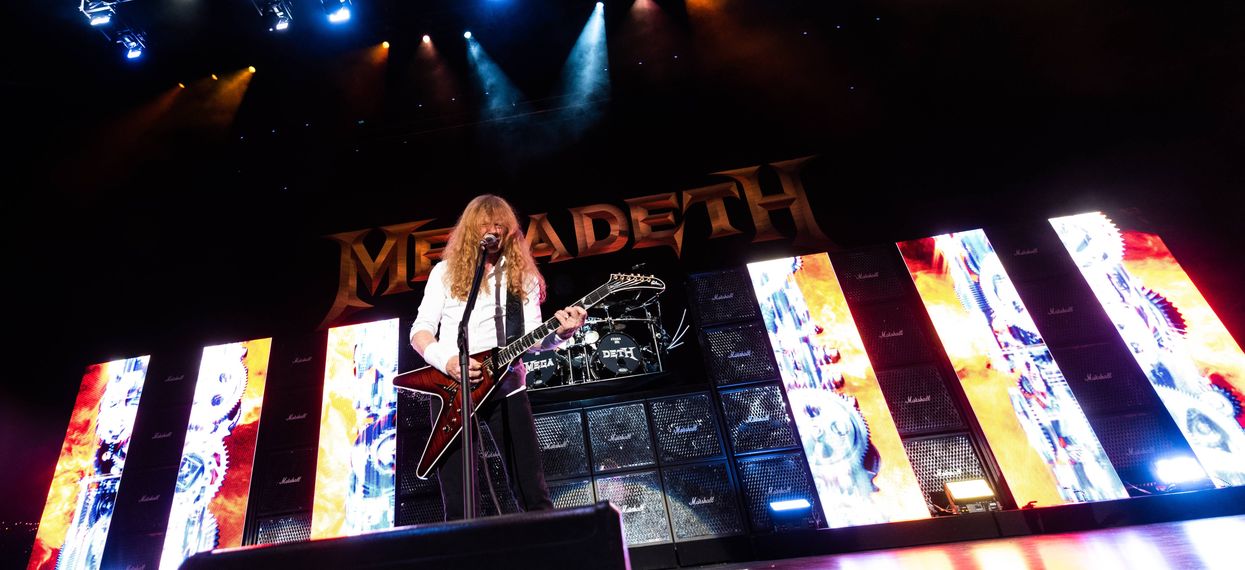

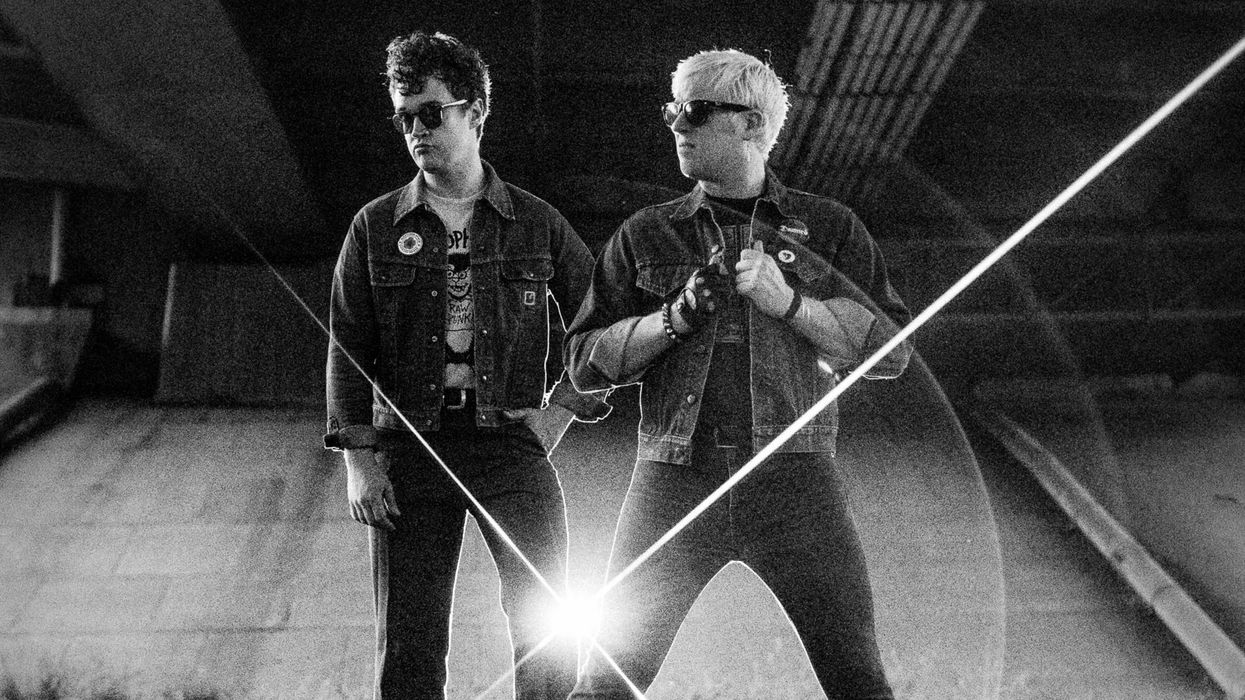

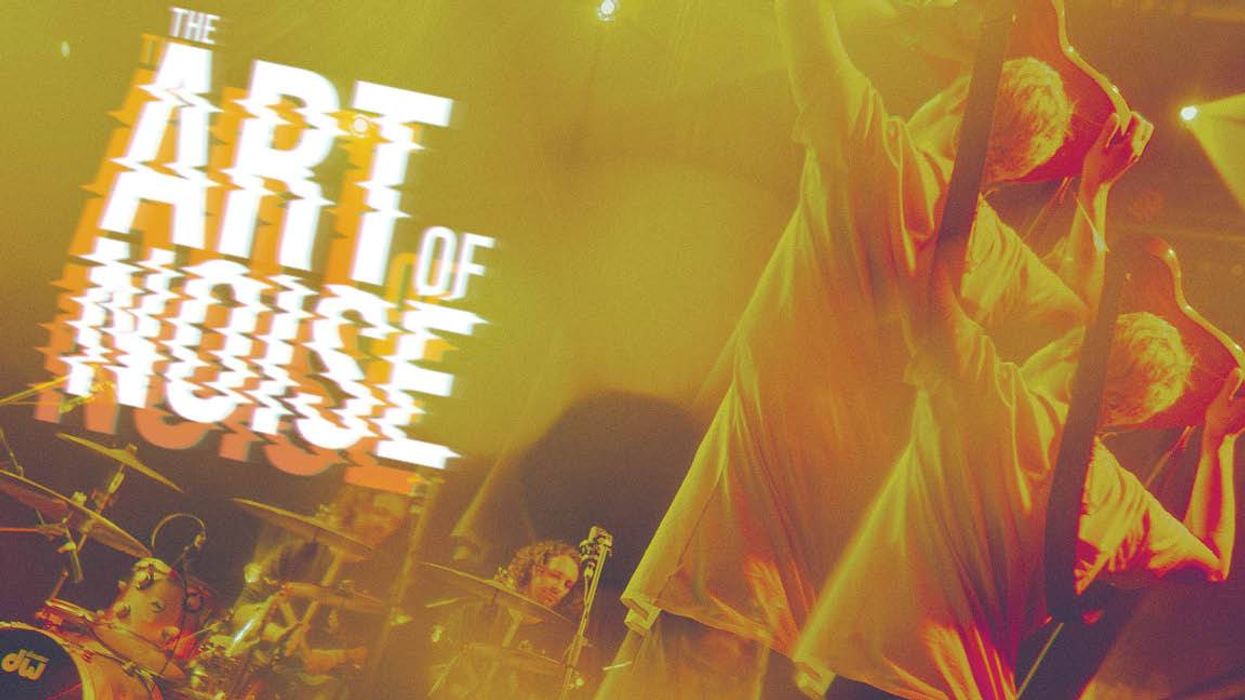
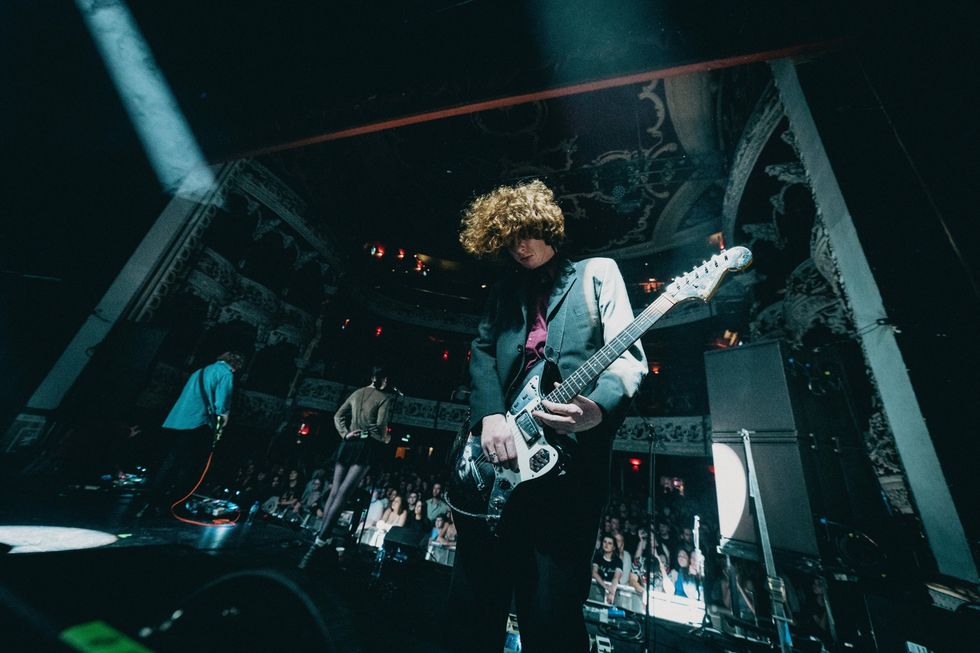
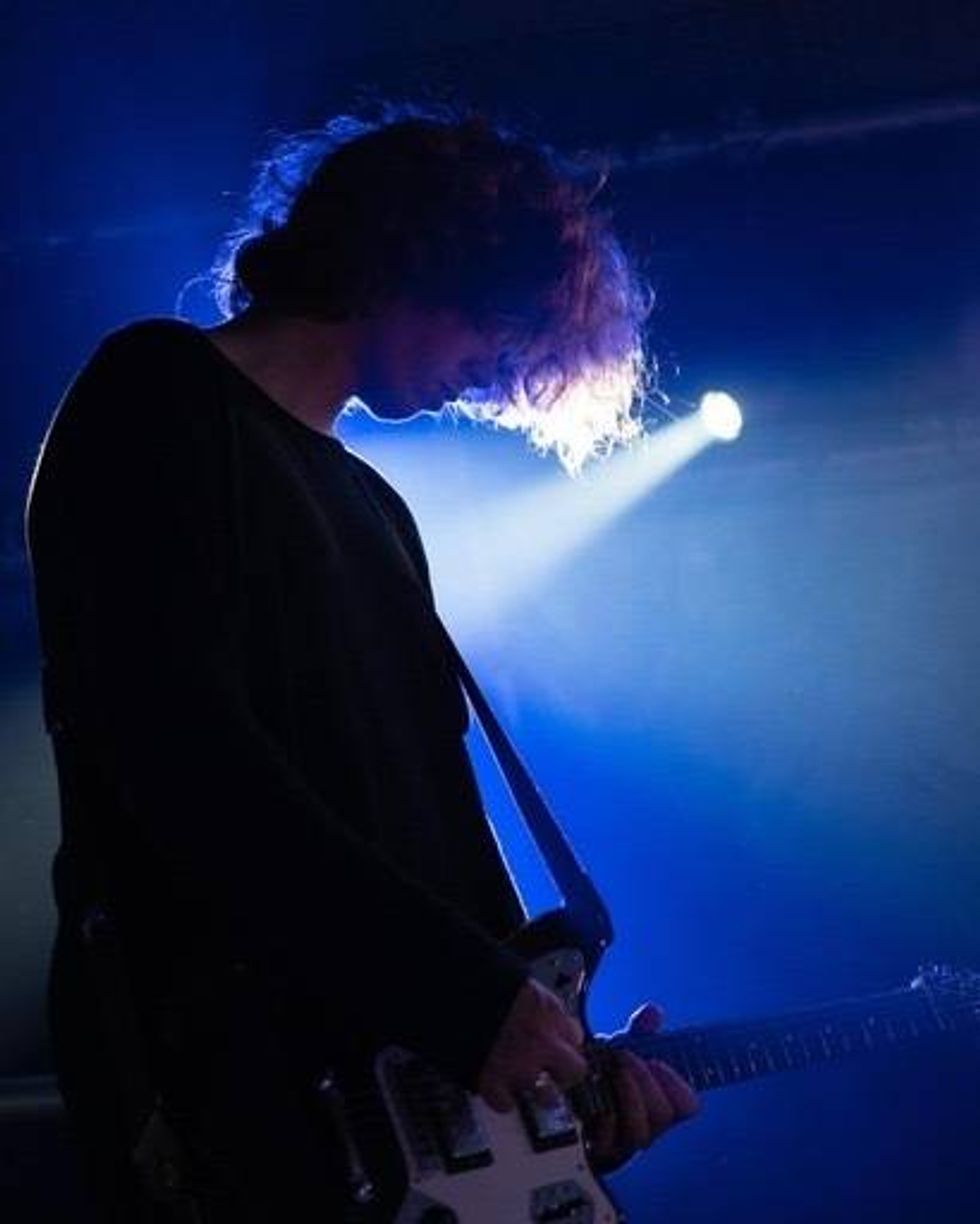
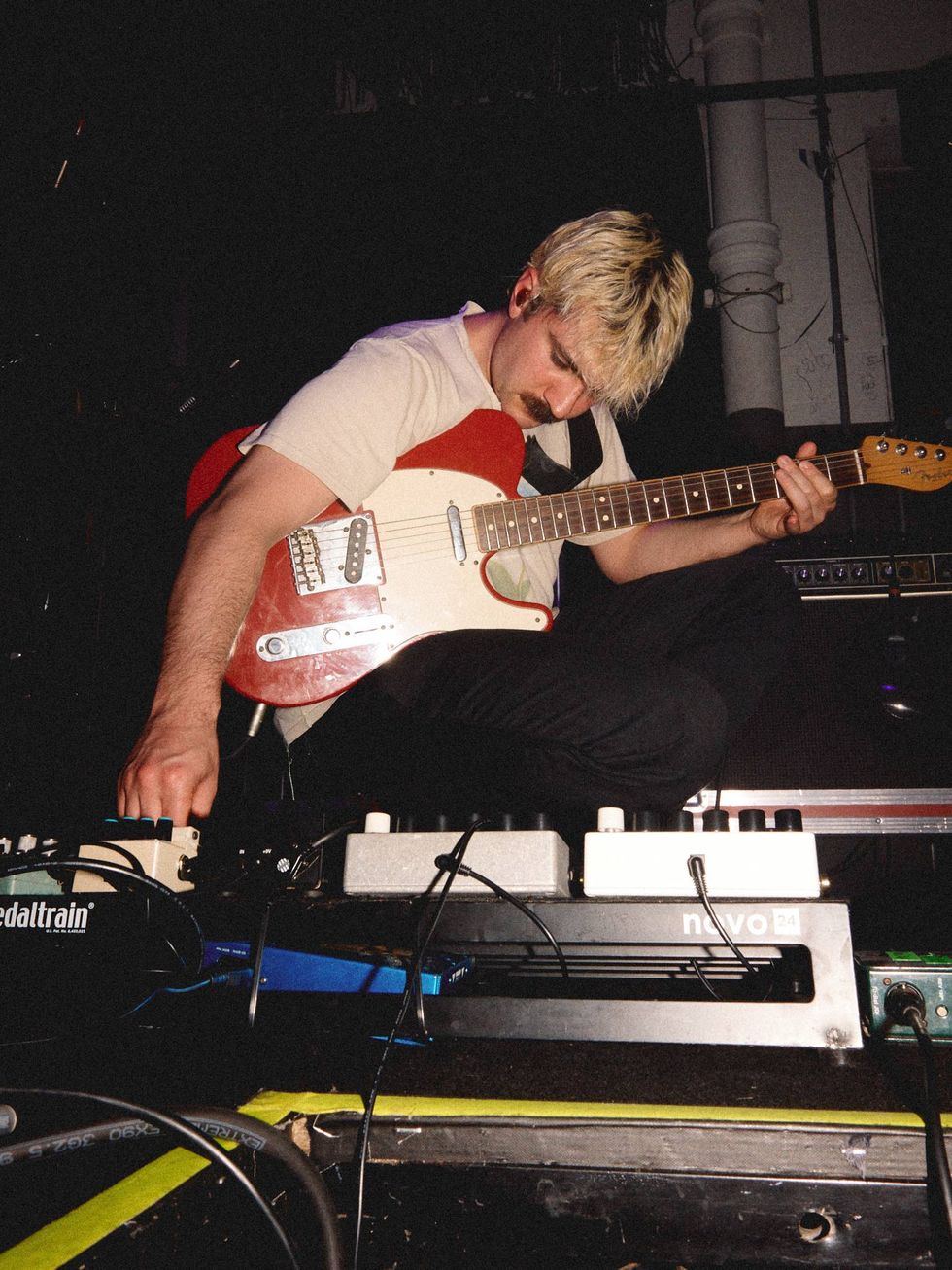
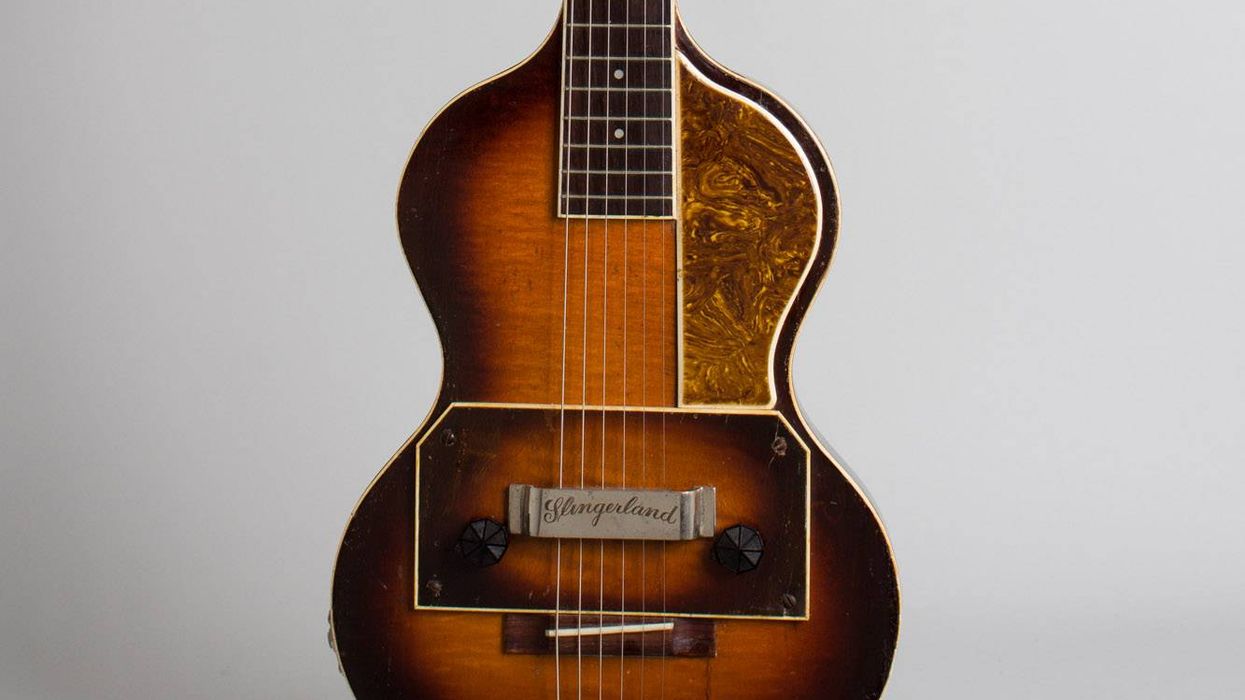
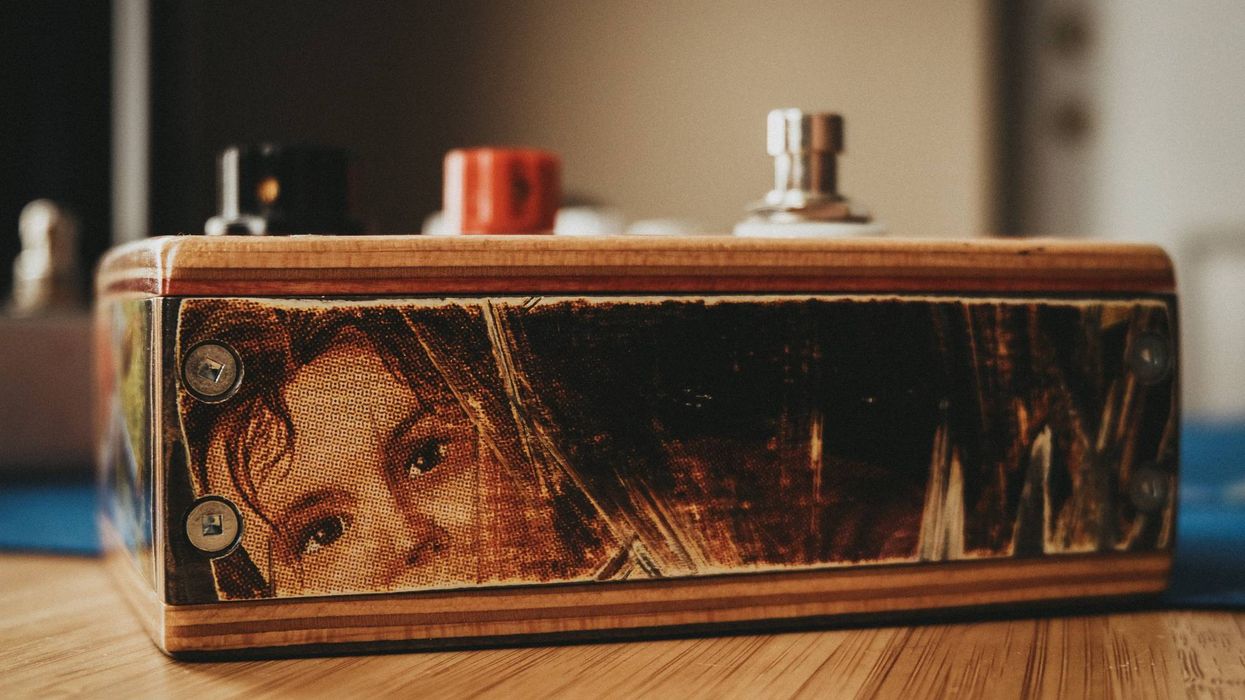
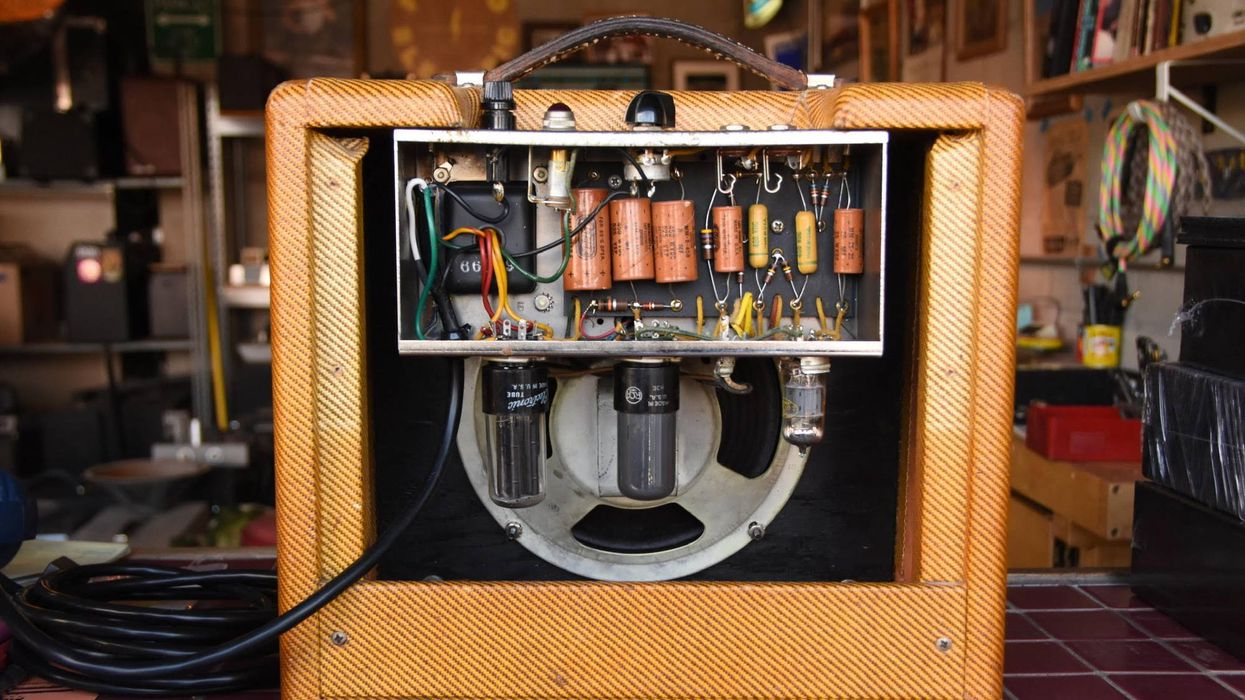

![Rig Rundown: Russian Circles’ Mike Sullivan [2025]](https://www.premierguitar.com/media-library/youtube.jpg?id=62303631&width=1245&height=700&quality=70&coordinates=0%2C0%2C0%2C0)
